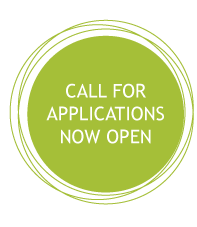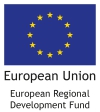Second call for applications is open
Monday, August 24, 2015 - 00:00
The second call for project applications is open. The Central Baltic Programme welcomes project applications via its eMonitoringSystem (eMS) until 23 October, 2015. All applications must be submitted electronically to the system by 15:00 (Finnish time, CET +1) on the closing date of the call. It is strongly recommended not to leave the submission to the last moments.
Specifications of the second call
The call is open for applications in all four priorities and all specific objectives. According to the outcome of the first call of applications, however, the applicants are encouraged to develop projects especially under:
Two types of projects: small and regular
The call is open for two types of projects: small projects and regular projects. The small projects (max duration 2 years, max budget 200.000 eur) fill in and submit the eMS Application Form once. For the regular projects the application procedure is done in two steps, of which this call is the first one. In the first step application the questions are related to the content of the programme, whereas the second step focus is on project implementation. Only those regular project applications passing the first step will continue to the second step.
Assessment and decision taking
The received applications are assessed by the Joint Secretariat after the call is closed. The decisions on which small projects are approved and which regular projects can proceed to the second step are taken by the programme Steering Committee consisting of representatives from each participating Member State. The Steering Committee meeting will take place on 26 January, 2016. The second step application process of the regular projects will take place 1 February-1 April, 2016. The decisions on the second step applications submitted during that time period will be taken by the Steering Committee on 14 June, 2016.
Guidance in filling in the Application Form
The Joint Secretariat (JS) has created a guidance document for filling in the Application Form. This document is very important for all applicants and can be downloaded via the link below. In case of technical questions about the eMS help can be achieved via ems@centralbaltic.eu. For any content related support read the Frequently Asked Questions section or be in contact with the Project Managers or Project Coordinator at the Joint Secretariat.
The important guidance files for the applicants:
Programme Manual 2.0
- The Programme Manual provides all the basic information needed both when applying for funding and while implementing the project.
Guide for Filling in the Application Form 2.0
- The AF guide provides technical instructions for filling in the application in the eMS.
The annex templates for the application:
Model of the Subsidy Contract
– The model to be used as Subsidy Contract for small and regular projects once the project has been approved for funding. The Subsidy Contract defines the rights and obligations of the project and will be signed between the Lead Partner and the Managing Authority. The final and actual Subsidy Contract will be generated from the eMonitoring System.
Click here to enter the eMS to register and start filling in the application.
Specifications of the second call
The call is open for applications in all four priorities and all specific objectives. According to the outcome of the first call of applications, however, the applicants are encouraged to develop projects especially under:
- Archipelago and Islands Sub-programme
- Priority 3 "Well-connected region"
- Specific Objective 1.3 "More exports by the Central Baltic companies to new markets"
- Specific Objective 2.2 "Sustainably planned and managed marine and coastal areas"
Two types of projects: small and regular
The call is open for two types of projects: small projects and regular projects. The small projects (max duration 2 years, max budget 200.000 eur) fill in and submit the eMS Application Form once. For the regular projects the application procedure is done in two steps, of which this call is the first one. In the first step application the questions are related to the content of the programme, whereas the second step focus is on project implementation. Only those regular project applications passing the first step will continue to the second step.
Assessment and decision taking
The received applications are assessed by the Joint Secretariat after the call is closed. The decisions on which small projects are approved and which regular projects can proceed to the second step are taken by the programme Steering Committee consisting of representatives from each participating Member State. The Steering Committee meeting will take place on 26 January, 2016. The second step application process of the regular projects will take place 1 February-1 April, 2016. The decisions on the second step applications submitted during that time period will be taken by the Steering Committee on 14 June, 2016.
Guidance in filling in the Application Form
The Joint Secretariat (JS) has created a guidance document for filling in the Application Form. This document is very important for all applicants and can be downloaded via the link below. In case of technical questions about the eMS help can be achieved via ems@centralbaltic.eu. For any content related support read the Frequently Asked Questions section or be in contact with the Project Managers or Project Coordinator at the Joint Secretariat.
The important guidance files for the applicants:
Programme Manual 2.0
- The Programme Manual provides all the basic information needed both when applying for funding and while implementing the project.
Guide for Filling in the Application Form 2.0
- The AF guide provides technical instructions for filling in the application in the eMS.
The annex templates for the application:
- Letter of intent – is used to confirm the willingness of partners to participate in the further development of the project. Mandatory for all types of partners for all 1st step applications.
- Confirmation letter – provides a signature to the project Application Form and completes the application. Mandatory for each small project or 2nd step project application.
- Co-financing statement – provides information on the co-financing for each project partner. Mandatory for all partners for all small projects or 2nd step project applications.
- Template for applying for Lump sums - provides information on the content and calculation methods used for applied lump sums. To be used by projects if relevant, i.e. if they apply for lump sums.
- De minimis declaration – is to be used by small projects or 2nd step project applications if relevant, meaning if the project partners’ activity is foreseen to fall under state aid.
- Declaration of financial capacity to undertake project activities - confirms that the NGO’s and private partners have the financial capacity required to implement a project. To be used by NGO’s or private partners in small projects or 2nd step project applications.
Model of the Subsidy Contract
– The model to be used as Subsidy Contract for small and regular projects once the project has been approved for funding. The Subsidy Contract defines the rights and obligations of the project and will be signed between the Lead Partner and the Managing Authority. The final and actual Subsidy Contract will be generated from the eMonitoring System.
Click here to enter the eMS to register and start filling in the application.



